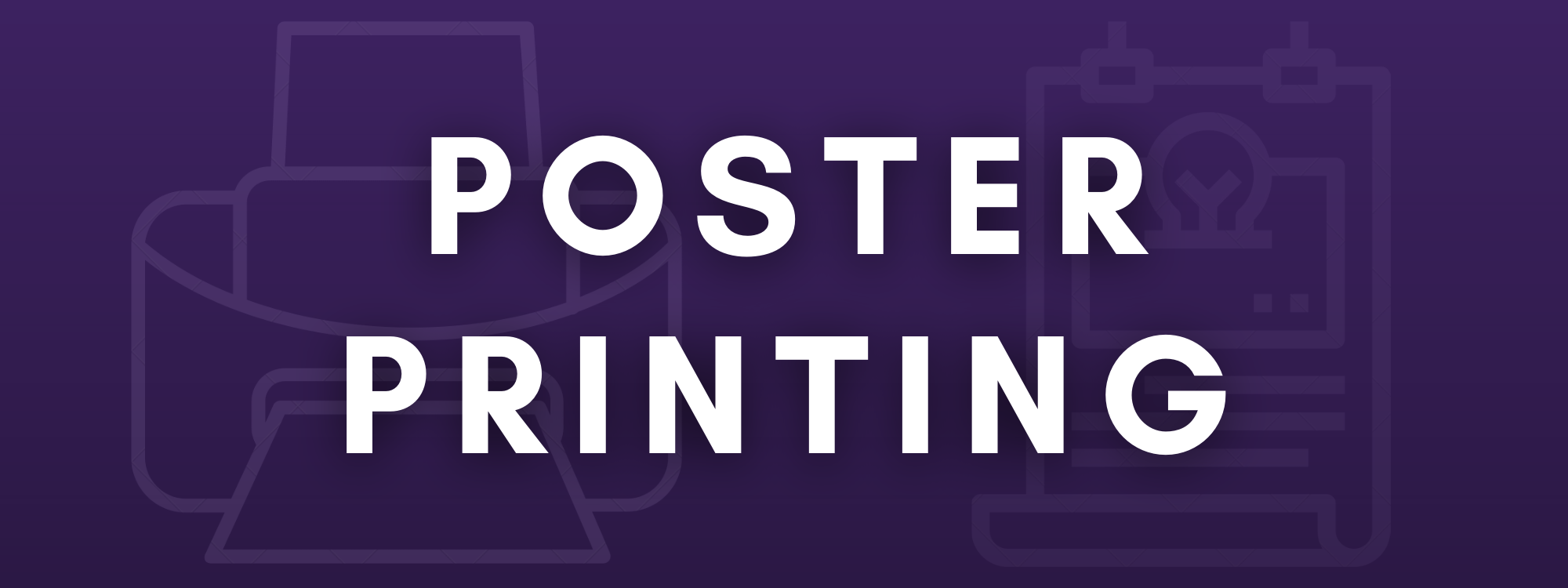Poster Template and Guidelines
• Please use this template when creating your poster: General Template
• Type in your own text in the suggested text boxes, or copy and paste text from an MS Word Document or Powerpoint presentation. Spell-check your text.
• Use a font between 24-32 points in Arial, Helvetica, or equivalent 'standard' fonts for text. You want the text to be big and clear, and easily read from a distance.
• Keep text either left or right aligned within each text box. Do not justify text. Keep font size consistent.
• Choose a text color that is easy to read against the background, but avoid bright complicated background designs as they may not print correctly.
• Highlight specific sections with headings (and other appropriate visual tools) to help organize thoughts.
• Each figure or graph should be accompanied by a corresponding legend. The legend should summarize the main point/conclusion of the figure or graph.
Typical Poster Content
Introduction: Provides an introductory explanation of your work. Why is your work important or interesting? Also include background information necessary to understand your work.
Results:
• Put the most important results in the most visible portion of the poster, usually the upper center portion.
• Minimize text but utilize photographs, graphs, diagrams, logos, etc, as much as possible. Use white space wisely. Use JPEG files for images (do not just copy and paste images from web sites) and avoid image files larger than 10Mb.
• Graphs done in a scientific graphing program (e.g., Sigma Plot, Prism, SPSS, Statistica) should be saved as JPEG or TIFF before copying and pasting into Powerpoint, but most simple graphs can be done in MS Excel or Powerpoint.
• Always zoom out to view the full poster on a large computer screen as some images may show a poor resolution when they are enlarged. You can also check for the overall visual organization of your poster this way.
Conclusion: Summarize your major findings (e.g., take-home messages) for your audience. Also include the significance of your work and future directions here.
Bibliography/Works Cited: This section is typically short but it is important to provide citations for things you mentioned in the poster that support your work. This is usually put toward the bottom of your poster.
Acknowledgements: Acknowledge your funding source, e.g., Undergraduate Research Program. You can also include names of lab members and other people who helped with the project but are not on the author's list. This is typically put toward the bottom of your poster.
Printing and Laminating a Poster
• Recommended poster size is 40 X 40 in.
• Have your mentor review (you may have to go through this process multiple times) and approve it.
• Go here to submit your poster request. The lab will convert your pptx file to a suitable format for the printer. You can request to see a copy of this file (to check for color and accuracy) before printing. This is especially important if your poster contains special fonts (e.g., scientific symbols) or has complicated graphics.
• File saved in PDF format preferred.
• The Undergraduate Research Program covers the fee of your poster if you are a grant recipient of the program and the charge is not included with your grant budget (e.g., SURF, Fall/Spring Grants, RAP, Research Scholars Program, etc.). If unsure, please email urp@uww.edu for verification.
• If you are not an Undergraduate Research Grant recipient of any related program, the office advises to inquire about funds with your respective department and/or sponsor. If neither of these options are available to you, you will be responsible for the poster charge.
○ New rates - Printing: $25, Laminating: $6
• Allow at least 2 working days between contacting the gaps lab and having the poster. Laminated posters do take a bit longer.
•See this document for more tips on successful printing.
• Please see the ICIT page for further details on Poster Printing and Lamination.
At the Event
• Don't be shy! If anyone looks at your poster, ask if you can give a guided tour of it. You should be ready with a five-minute account of your work. Make good use of the images and graphs on your poster during this time.

